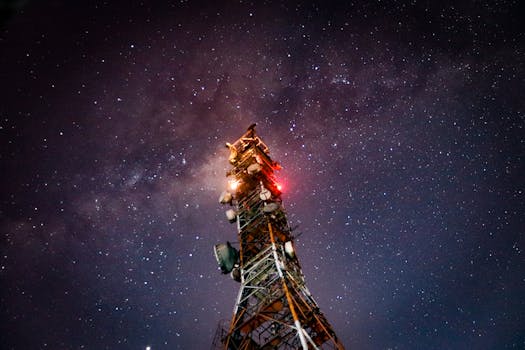
MEO Satellites: Revolutionizing Global Communication with Medium Earth Orbit Technology
MEO satellites, or Medium Earth Orbit satellites, are a type of satellite that operates in an orbit approximately 2,000 to 36,000 kilometers above the Earth’s surface. This orbit is significantly lower than the Geostationary Orbit (GEO) used by traditional satellites, which are parked at an altitude of around 36,000 kilometers. The unique characteristics of MEO satellites make them an attractive option for various applications, including global communication, navigation, and Earth observation.
The key advantage of MEO satellites is their ability to provide faster and more reliable connections compared to traditional GEO satellites. With a lower latency of around 20-30 milliseconds, MEO satellites enable real-time communication, making them ideal for applications that require high-speed data transfer, such as video conferencing, online gaming, and cloud computing. Additionally, MEO satellites offer a higher signal strength, resulting in better coverage and fewer dropped calls.
History and Development of MEO Satellites
The concept of MEO satellites dates back to the 1990s, when the first MEO satellite systems were proposed. However, it wasn’t until the early 2000s that the first commercial MEO satellite systems were launched. One of the pioneers in this field was the O3b Networks, which launched its first MEO satellite in 2013. Since then, several other companies, including SES, Intelsat, and OneWeb, have launched their own MEO satellite constellations.
The development of MEO satellites has been driven by advances in technology, including improvements in satellite design, propulsion systems, and launch vehicles. The use of advanced materials and modular architectures has enabled the creation of smaller, more efficient, and cost-effective satellites. Furthermore, the development of reusable launch vehicles has significantly reduced the cost of launching satellites into MEO, making it a more viable option for commercial operators.
Applications of MEO Satellites
MEO satellites have a wide range of applications, including global communication, navigation, Earth observation, and scientific research. In the field of global communication, MEO satellites are used to provide broadband internet connectivity to remote and underserved communities. They are also used to support mobile networks, enabling cellular operators to extend their coverage and improve the quality of their services.
In the field of navigation, MEO satellites are used to provide location-based services, such as GPS and GLONASS. These satellites transmit signals that can be received by GPS receivers, enabling users to determine their exact location and velocity. MEO satellites are also used in Earth observation applications, such as weather forecasting, disaster monitoring, and environmental monitoring.
Future of MEO Satellites
The future of MEO satellites looks promising, with several new constellations and systems in development. One of the most ambitious projects is the OneWeb constellation, which aims to launch over 600 MEO satellites to provide global broadband connectivity. Other companies, such as Amazon’s Kuiper Systems and SpaceX’s Starlink, are also developing their own MEO satellite constellations.
As the demand for global connectivity continues to grow, MEO satellites are likely to play an increasingly important role in meeting this demand. With their ability to provide fast, reliable, and cost-effective connections, MEO satellites are poised to revolutionize the way we communicate and access information globally.